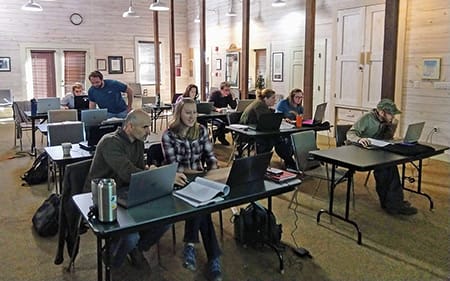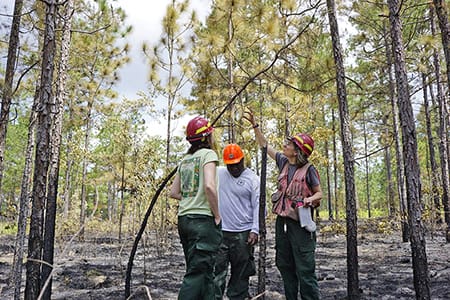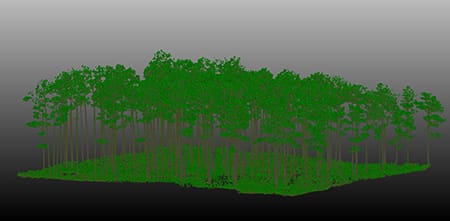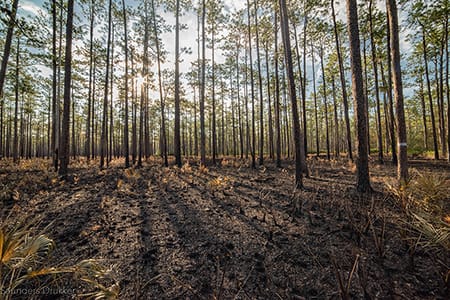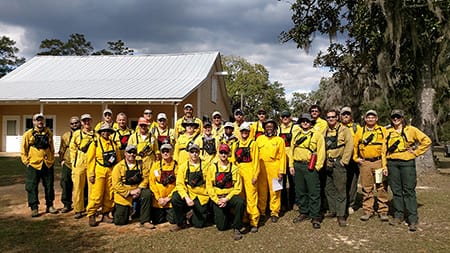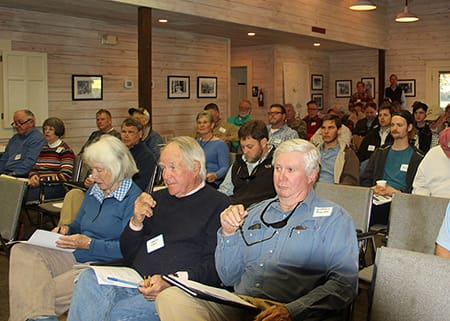This past summer, Tall Timbers Biological Monitoring Coordinator, Kim Sash, and Technician Deanna Riente initiated a gopher tortoise disease study. Sash and Riente along with Kendra Rich, a University of Tennessee veterinary student, trapped gopher tortoises on five properties in the Red Hills region. Considered a threatened species in both Florida and Georgia the project focused on obtaining samples from tortoises to test them for diseases that may contribute to their population decline.
The terrestrial tortoise is found in upland habitats with suitable soils in Florida and south Georgia, but its numbers are declining due to a number of reasons, including habitat loss and disease. A keystone species, gopher tortoises dig burrows that are also used by more than 360 other species, including amphibians, other reptiles, rodents, and a whole suite of insects.
Due to the biological importance of the gopher tortoise and its burrows, Sash remarks, “This research is important because the Red Hills region supports the largest gopher tortoise population on private lands.”
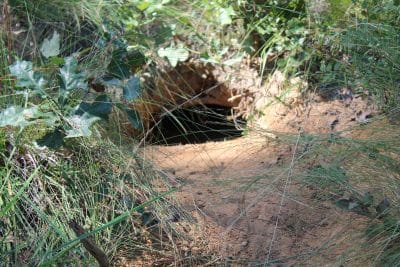
A gopher tortoise burrow.
On these private properties, Sash and Riente scouted for gopher tortoise burrows and flagged the burrows as potential trapping sites.
The flagged burrows were then inspected with a gopher tortoise burrow scope, which is a camera and light mounted to a long cable and attached to a video monitor. If a tortoise is present in the burrow, a trap is placed at the burrow entrance. The traps are covered to shield the tortoise from the sun, and marked on an app to keep track of where each was located. The traps were checked multiple times per day to see if a gopher tortoise was captured.
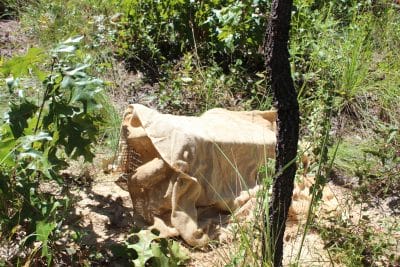
A covered gopher tortoise trap.
Once trapped, Sash and Riente take the gopher tortoises back to the Tall Timbers campus to collect oral and cloacal swabs and a blood sample. They also take measurements (length, sex, weight) of each tortoise and record this information.
During the course of the study some gopher tortoises were recaptured to see if season plays a role in disease abundance. Therefore, in order to recognize individuals Sash and Riente use PIT (Passive Integrated Transponder) tags to give each individual and unique number. According to Sash, “It’s the same as microchipping your pet.” They use a PIT tag reader to scan the tortoise and determine if they’ve trapped the tortoise previously. If they haven’t, they’ll tag it and be able to identify it in the future.
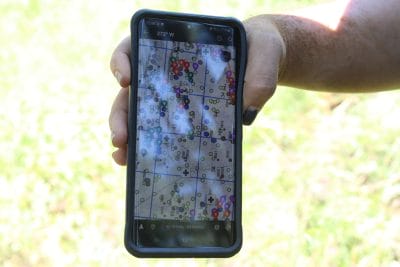
Here, you can see where each gopher tortoise trap is located on the property.
Sash explains, “We can use this information to understand the general health of this large and ecologically important population.” Samples are currently at the University of Illinois where they will be analyzed for multiple diseases.
As of November 2022, Sash and Riente trapped 110 tortoises, 49 from Georgia and 61 in Florida. Their data can help them further research on gopher tortoises in the region. According to Sash, “As gopher tortoises are relocated around the state due to development, we hope to use this data to see if disease is transmitted from resident or relocated tortoises through the rest of the population and what impacts that will have on gopher tortoise demographics.”











